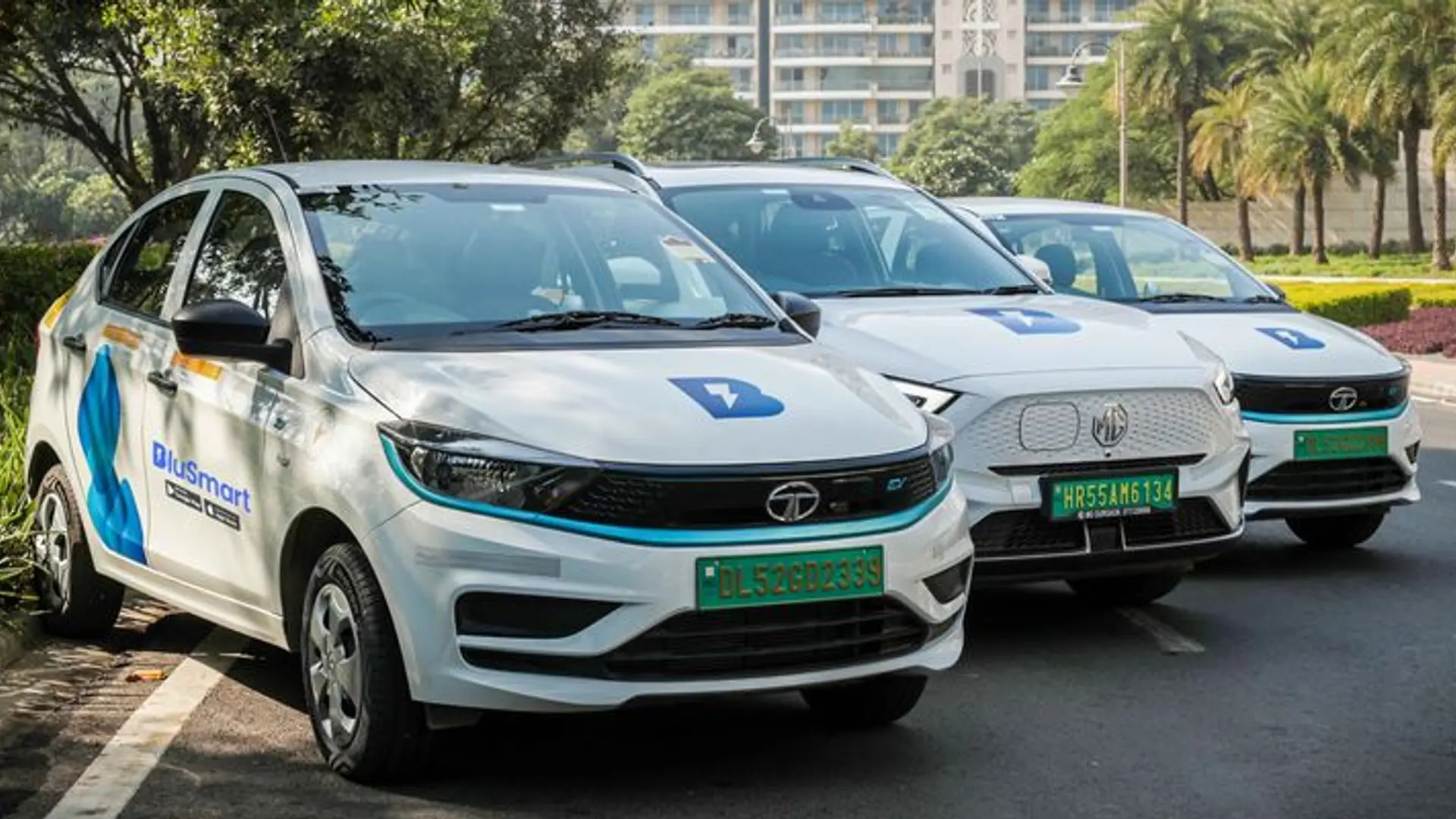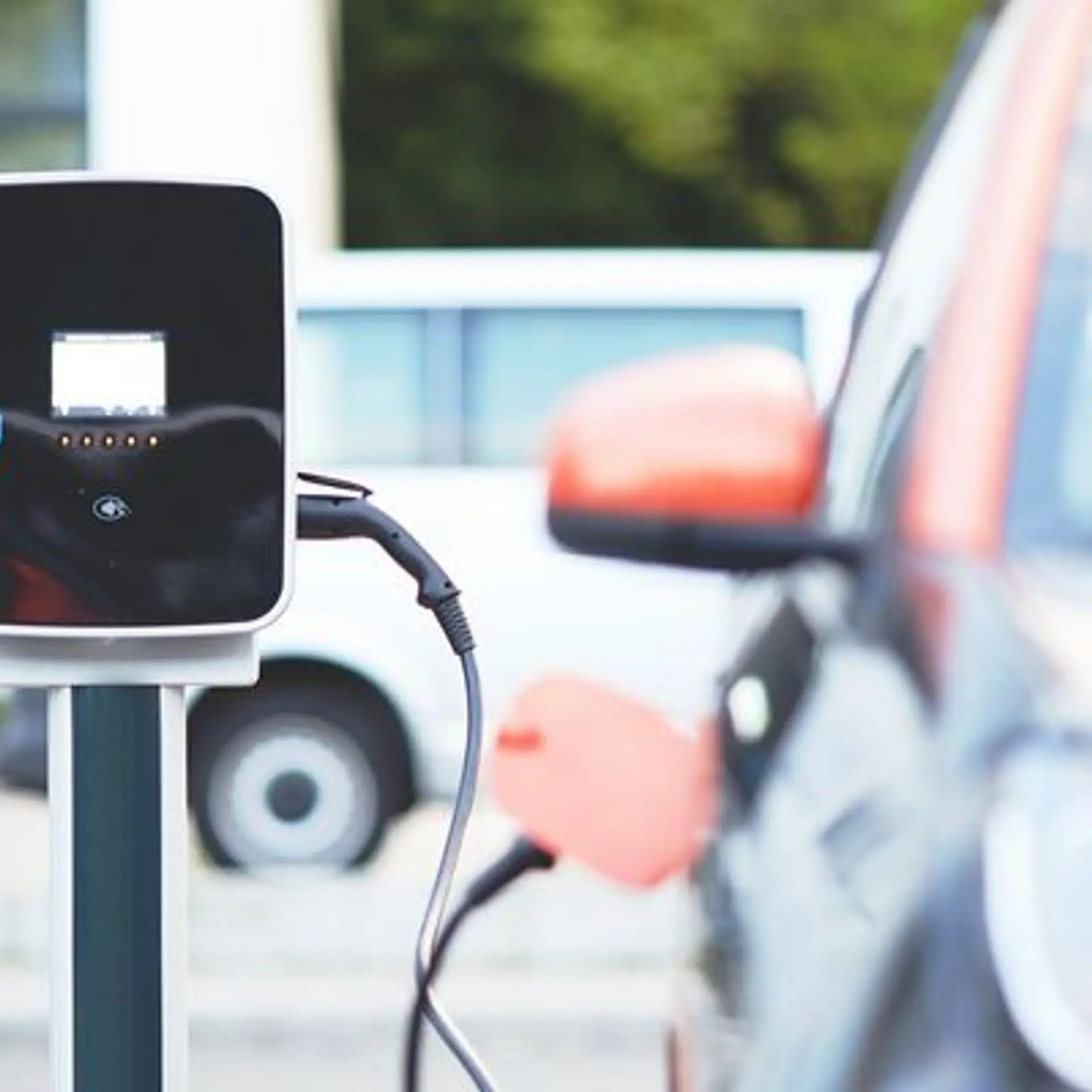Corporates shift to greener EVs for employee commute but hiccups stay for the ride
Corporate mobility is seeing a sea change as businesses elbow out ICE vehicles and warm up to EVs, signalling a green thumbs-up for sustainability. However, this eco-friendly switch isn't smooth sailing.
The only thing that punctuated the very prosaic scene of employees making their way into a glass-fronted office, clutching their umbrellas, was the silent yet steady stream of electric vehicles (EVs), that shuttled in and out, facilitating the daily commute for the Bengaluru-based tech park’s workforce.
An integral part of the IT park's daily rhythm, these EVs offered a sustainable and convenient alternative to traditional gas-guzzlers.
Ram Lakshmanan, the tech park’s transport manager, says most of the companies he manages employee commute for shifted to EV cabs around six months ago and operations have largely been smooth. And, for a while, any observation of the scene too yielded little more than a pleasant sense of normalcy.
That is until the rains intensified.
Amid the relentless downpour, two EVs—Tata Xpress-Ts—found themselves in a predicament: they’d been scheduled to cover 80 kilometres in pickups and drop-offs for the shift but the deluge had trapped them in traffic for more than two hours, sapping their battery power. They were left with a mere 12 to 15 minutes of charge—enough to get them back and hook them up to one of the fast-charging guns.
Charging has always been an issue for EVs. And with fleets, especially when they’re on tight schedules and involve pickups and drops of personnel, these vulnerabilities can lead to a confusing scramble that sometimes result in costly solutions.
The anxious drivers of the stranded EVs contacted the dispatch centre, however, Lakshmanan’s options were severely limited. Amid the pressure to safely return stranded employees, he urgently reached out to an existing internal combustion engine (ICE) fleet supplier and beseeched them to deploy 2-3 vehicles.
“I can’t run the risk of an EV cab running out of battery again waiting in traffic,” he told the operator on call.
When asked if such situations were frequent, Lakshmanan affirmed that such issues were common with EV fleets and that was why the IT park kept two vehicles on standby.
Wasn’t this costing the company more than usual then? “Yes, it is because these cabs are not used at all on some days when everything goes well. But then on some days, like this one, it proves its value,” he tells YourStory.
Expounding the slew of issues that plague the commercial passenger EV segment, is the complexity of employee transportation and mapping out the precise routes and schedules of these cars, which turns managing an EV fleet into an operational nightmare.
Still, that hasn’t deterred companies such as , , Bombay Logistics, , and others from setting up shop to help businesses electrify their employee commute fleet.
"Our premise centred around the idea that with hydrocarbons becoming increasingly expensive by the day, it would it be more sensible to power urban mobility using EVs,” says Sanjay Krishnan, Founder and CEO of Lithium Urban—set up in 2014.

Lithium Urban started as a curbside EV taxi company before it pivoted to supplying other companies EV cabs for employee transportation. Its first client was TESCO’s Whitefield, Bengaluru campus. From managing 250 EV cars in the first couple of years, the company has expanded to 3,000 vehicles across 19 cities.
“There’s traction for EV cabs for sure…it’s an opportunity for companies to mitigate the effect their actions have on the environment,” says Krishnan.
Apart from environmental benefits, EV fleets also enable companies to accumulate carbon credits for future sale—even though the market for carbon credits in India is still in its nascent stages. Carbon credits enable individuals and businesses to offset their carbon emissions by investing in projects that reduce greenhouse gases.
“EV fleets can help companies meet their CSR (Corporate Social Responsibility) goals very easily—it’s a low-hanging fruit,” says Rajat Hegde, Founder and CEO of VOZI, another EV fleet company which will soon launch its fleet management software.
The most significant benefit, however, is financial: transitioning to EVs signals a commitment to sustainability and environmental responsibility (ESG goals), and can help companies command a premium price for their goods and services.
Meeting ESG goals can also improve access to capital and partnerships.
“Investors and financial institutions do tend to favour companies that demonstrate a commitment to sustainability, and there have been cases where that has led to more favourable lending terms, investment opportunities, etc.,” says an ESG analyst with KPMG who spoke to YourStory on the condition of anonymity.
Companies proactively embracing EV initiatives are also, down the line, hoping to benefit from subsidies, tax incentives, and other forms of government support as and when they are formulated.
Yet, the decision to make the switch doesn’t come easy.
Catch-22
When TCS in Bengaluru looked into electrifying some of its employee transport fleet, the biggest impediment was range anxiety and the fear of “battery running out mid-route."
“There was a lot of discussion around the opportunity cost of employing logging in late (due to cabs running out of charge mid-way) versus potential cost savings netted from switching to EV,” said one person part of those discussions.
Because TCS works round the clock, including graveyard US shifts, many voiced concerns about women passengers getting stranded en route at odd hours. While the latter continues to remain a concern, many of their fears were allayed when they met with the fleet operators.
"It wasn't until they had us hop into the cab and see for ourselves the car's instrument cluster which provides real-time battery charge information, along with the software that could monitor this battery status from a system hundreds of kilometres away, that we realised this was something trackable and controllable," the person explains.
Batteries continue to remain a concern even now as these vehicles are required to be ready to go out for continuous pick-ups and drops. While charging stations can be installed on the premises, it’s a costly endeavour that requires substantial capital expenditure of Rs 40-50 lakh per station.

(Design credit: Nihar Apte)
“The Tata Xpress T cars can’t be fast charged every time the battery runs out—you have the do one slow cycle recharge which takes up to 8 hours, and then you can do two fast ones that take 15-30 minutes,” says VOZI’s Hegde.
Only topping up via fast charging can materially damage the battery, which is an EV’s costliest component.
Most of these fleet operators have charging hubs located off their client’s campuses, but they do facilitate installing a few charging guns in the office premises, if possible. They also use public chargers when needed.
Bengaluru, alone, has over 700 charging stations across brands and companies. Bangalore Electricity Supply (BESCOM) recently submitted a proposal to install charging stations every 500 metres throughout the city.
So while it's true that charging may become less of a concern in the future, other major issues, like route mapping, still persist.
In a world where the EV’s power source is a precious resource, route mapping not only helps conserve the battery and optimise employee commute, but also enables the transport manager to account for possible deviations such as potential roadblocks, traffic diversions, unexpected closures etc.
"Human operators have to constantly monitor traffic updates, assess alternative routes, and account for factors like charging station availability, all while adhering to strict schedules,” says employee transportation management company ’s Founder Deepesh Agarwal.
“Manually managing this can introduce errors, can be tedious, and requires companies to spend more to hire more personnel,” he adds.
However, routing has become a manageable problem thanks to tech companies like MoveInSync, , and which have simplified routing by automating fleet management for a variety of use cases, including employee commute.
MoveInSync, for example, not only helps companies chart out pick and drop schedules but also monitors the car’s health, battery life, and driver’s alertness. Its software also puts together several contingency plans to mitigate unforeseen circumstances.
The final niggling issue is that not too many mechanics know how to service an EV car, and that’s a problem if it breaks down. Only the manufacturers—Tata, in most cases—can service repair requests.

(Design credit: Winona Laisram)
A greener future
Once businesses decide to take the plunge, infrastructure and charging station costs don’t really matter all that much—in for a penny, in for a pound, say most EV fleet operators YourStory spoke to for this story.
There’s also empirical proof that businesses are demanding EVs in their fleet.
Out of 5,000 vehicles on MoveInSync’s employee transportation management platform, 8% are EVs. While that may not seem big, it’s still a 4X jump from last year. The company works with fleet operators including Refex Green Mobility, KSiri Mobility, SR Cabs, Vahana Mobility Solutions, and VOZI parent VR Mobility, among others.
Fleet operators and businesses are also showing greater trust in EVs as they become more ubiquitous. Operators say that pre-COVID-19, the average length of an EV trip was 10-15 kilometres. Now, a corporate EV can comfortably cover an average of 18 kilometres, comparable to the 20 kilometres that an ICE vehicle is typically dispatched for, explains Agarwal from MoveInSync.
It’s also noteworthy that despite the 10-15% premium an EV fleet commands over ICE vehicles, businesses are willing to shell out.
"As oil prices continue to climb, the additional cost of EVs compared to ICE vehicles doesn't make a significant dent in overall expenses. In fact, over the past three years, ICE fleet prices have surged by 20-30%, meaning we've been paying a premium for ICE vehicles anyway,” says a company executive in charge of administration and employee management, adding that EVs also offer price stability.
Beyond the obvious benefits EVs offer, there has been resounding government support for electrification too: by 2030, regulators are hoping that 30% of the country’s total vehicle fleet will be replaced by EVs. The government has announced subsidies, schemes and expenditures running into thousands of crores to support not just manufacturers, but also incentivise commuters and aid ancillary EV companies.
While the road may be bumpy, businesses continue to favour the silent hum of EVs over the rumbling ICE engines, strengthening their commitment to sustainability and a greener future.
Edited by Kanishk Singh










